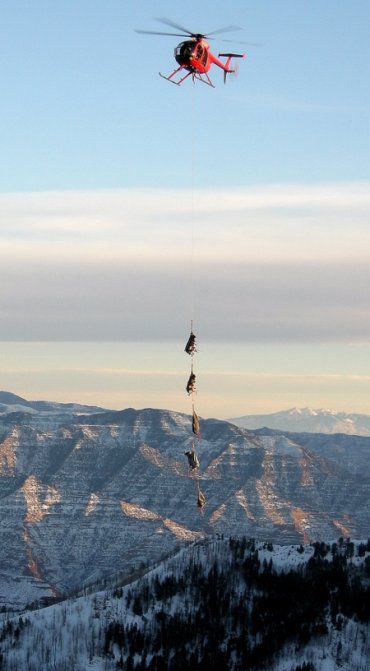In mid-January, the Utah Division of Wildlife Resources net-gunned 40 Rocky Mountain bighorn sheep in east-central Utah and took them for the ride of their lives. Hobbled and bagged, each animal was clipped one-by-one onto a long cable, dangling from a helicopter. After a maximum of five had been safely attached, the chopper pitched and swung into the air with a bunch of wide-eyed sheep swinging from its underside.
In all, three rams, 33 ewes, and 4 lambs flew about 30 miles up the Green River, before touching ground in Desolation Canyon. As its name implies, the canyon is rugged and remote-a perfect place for a seed population of bighorn sheep. The transplant’s objective of improving the distribution of bighorn sheep throughout the Green River corridor is a step closer to realization.
According to Acting Wildlife Manager Brad Crompton, there are sustainable bighorn sheep populations in the upper Green River below Flaming Gorge and in Gray Canyon just north of Green River. Before the transplant, the middle portions of Desolation Canyon supported only small, isolated groups of bighorn sheep. The transplant of 40 new animals will bolster sheep distribution in the canyon as well as connectivity between isolated populations along the Green River corridor.
About three years ago, a wild fire in Desolation Canyon burned approximately 5,000 acres. Several years of new vegetative growth has created some ideal bighorn sheep habitat, assuring plenty of feed for the new transplants. The combined life requirements of food, water, cover and space are expected to result in successful reproduction and population growth. This project was made possible in large part by funding and support from the Utah Foundation for North American Wild Sheep.
Bighorns fly to Desolation Canyon

"Five bighorn sheep are dropped from a chopper into destination Desolation Canyon."
